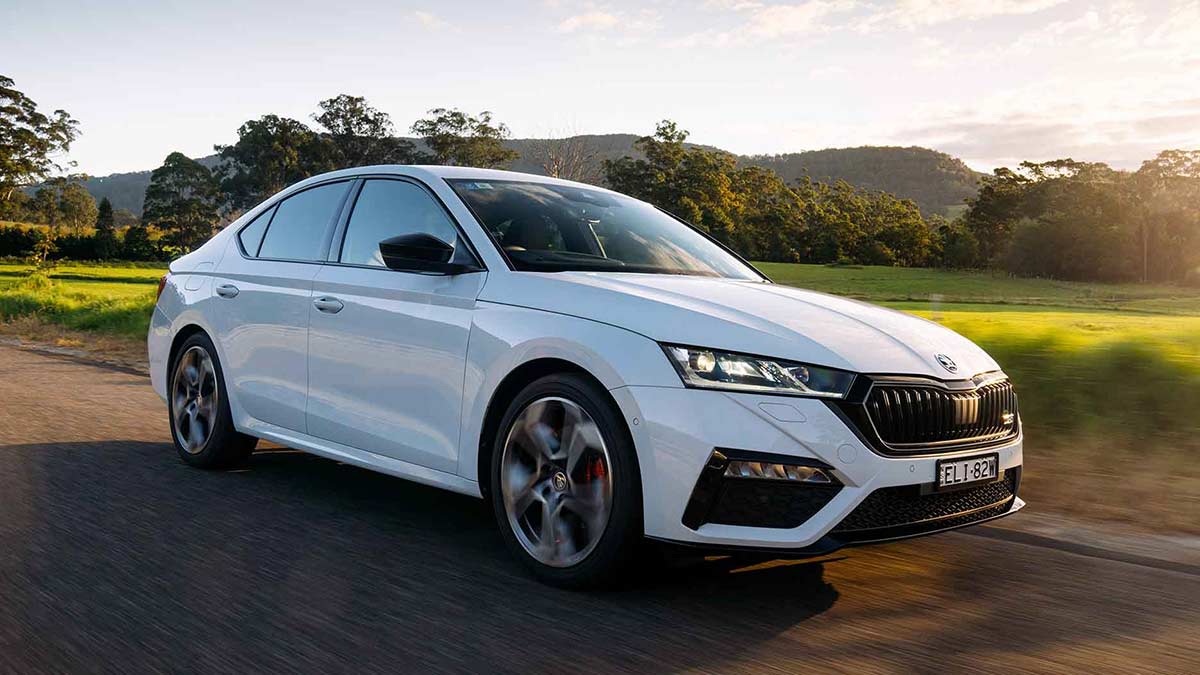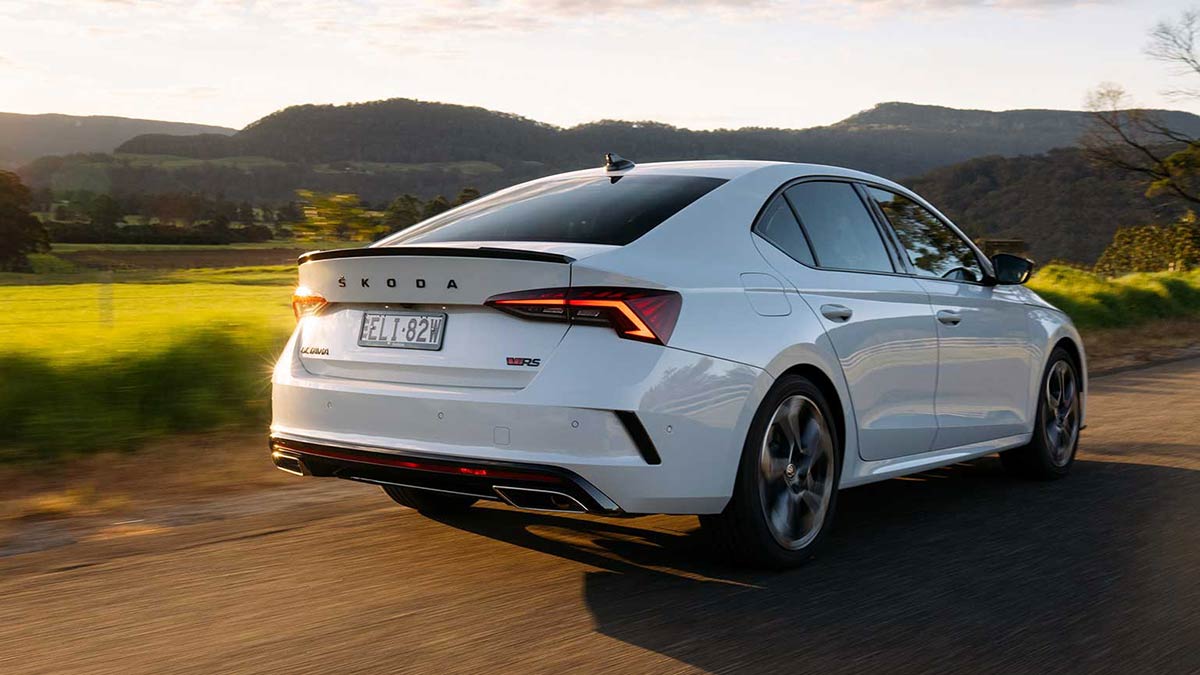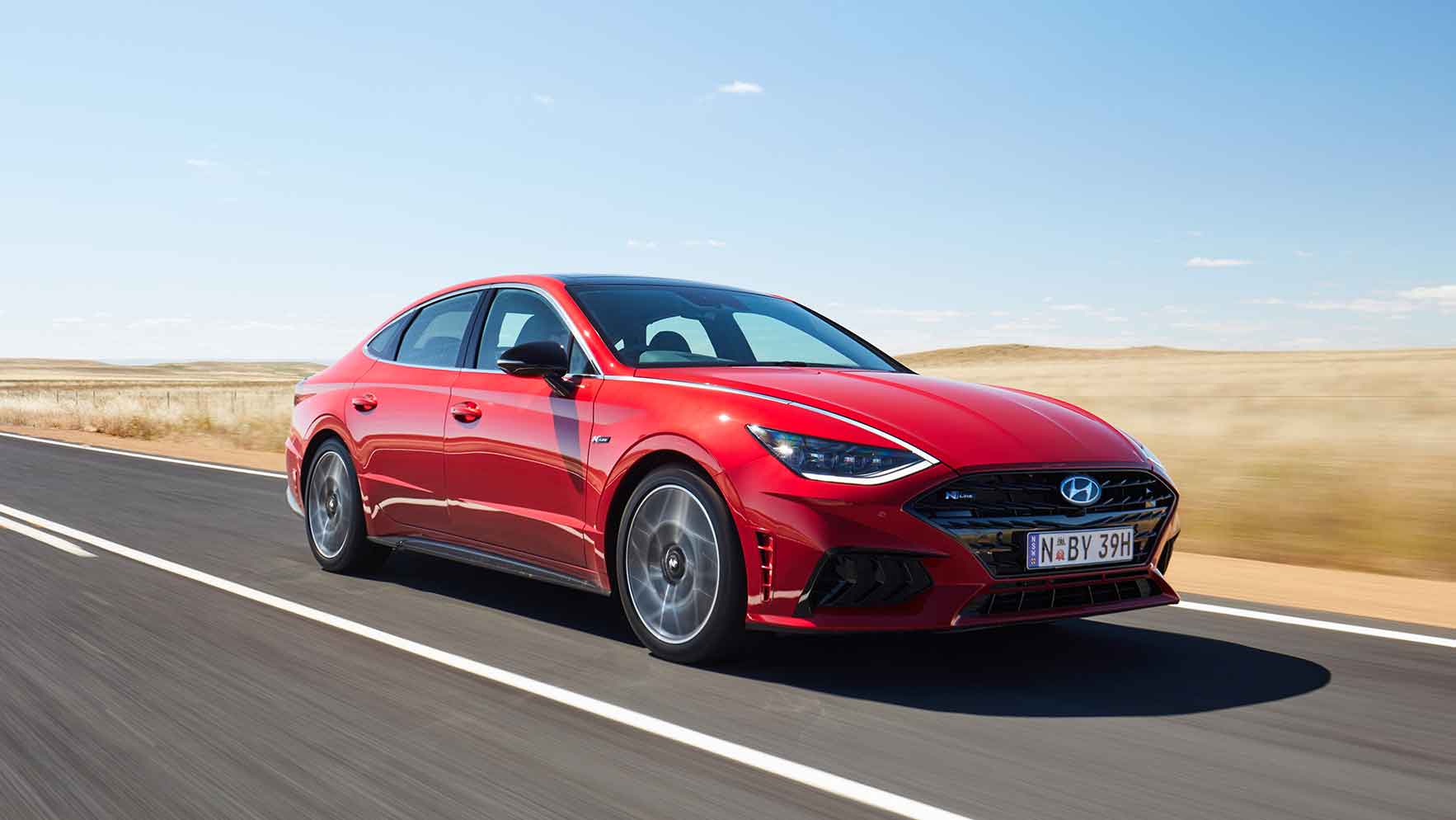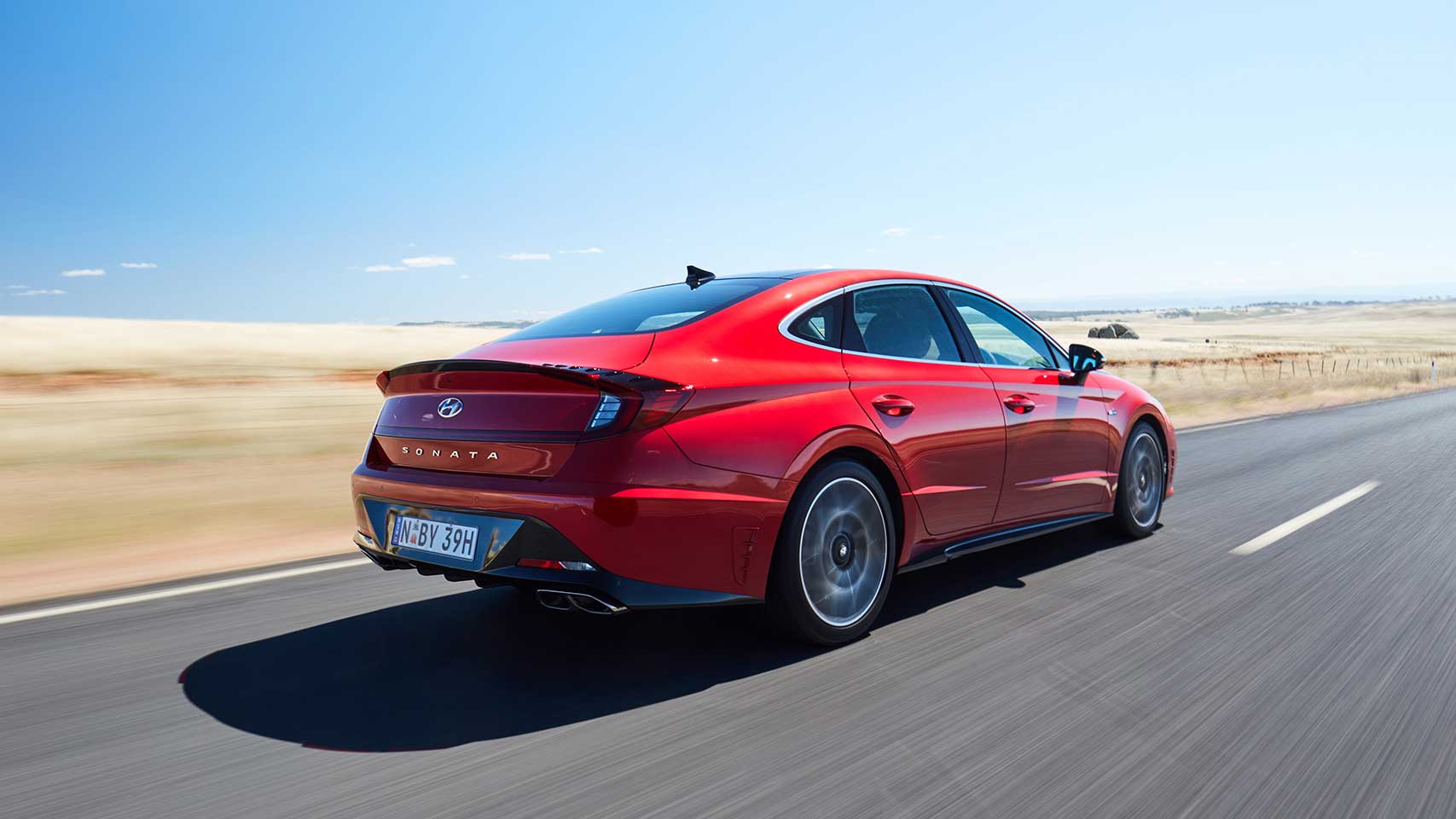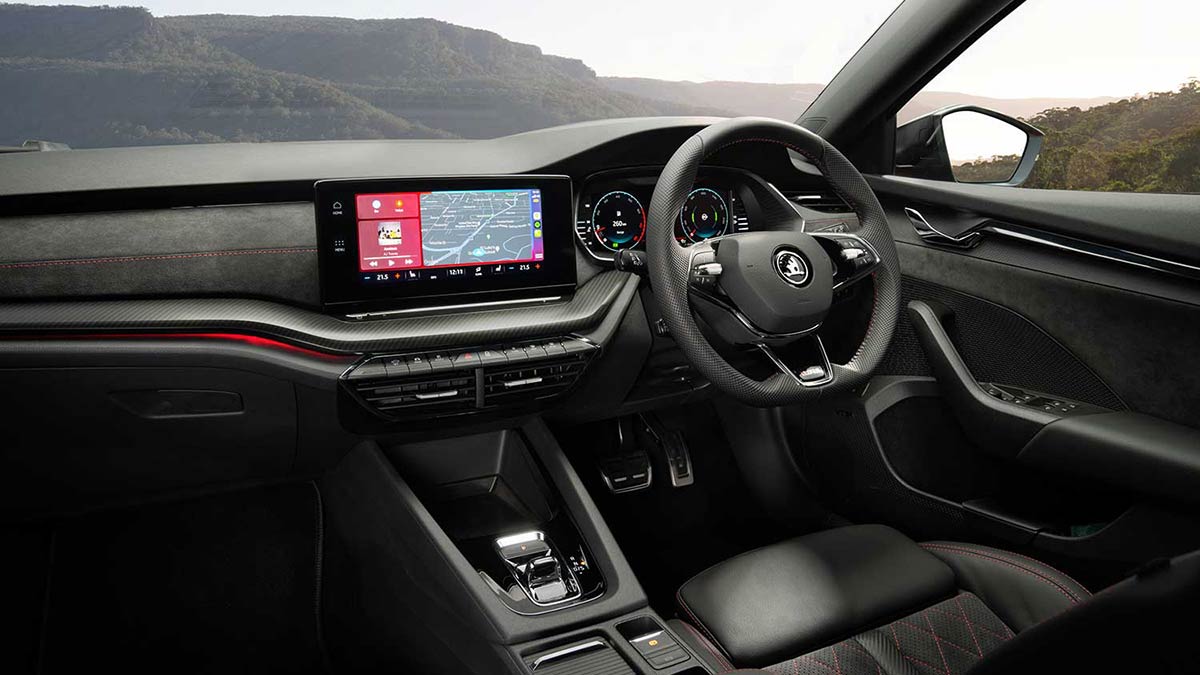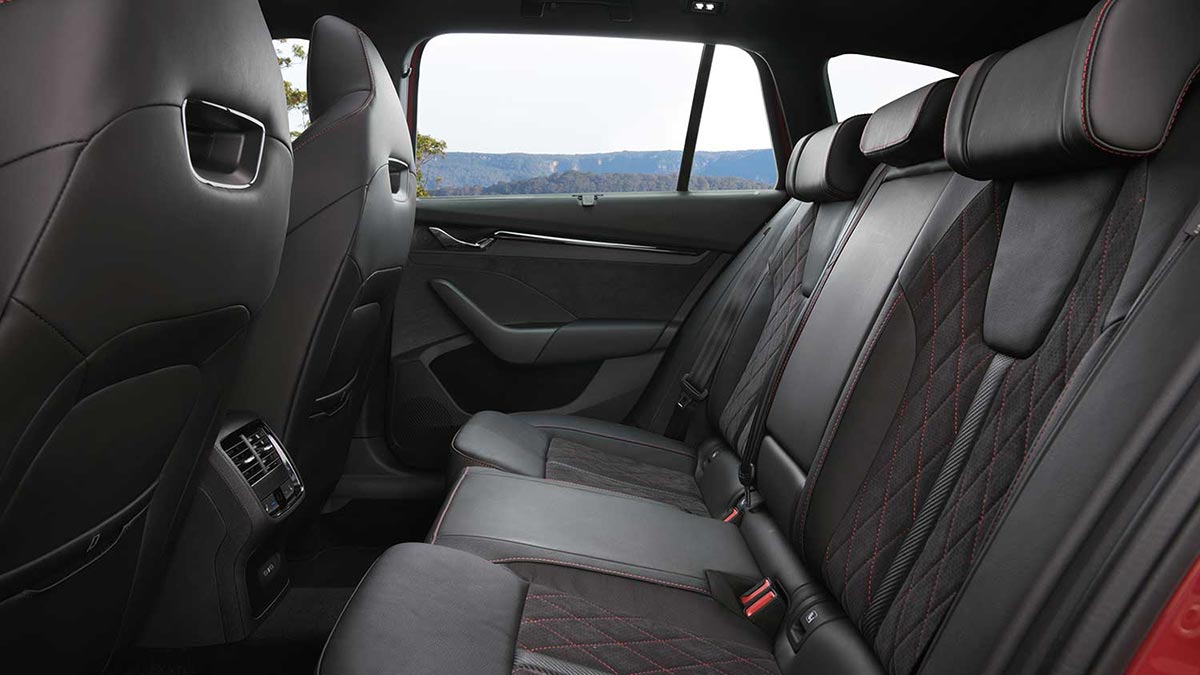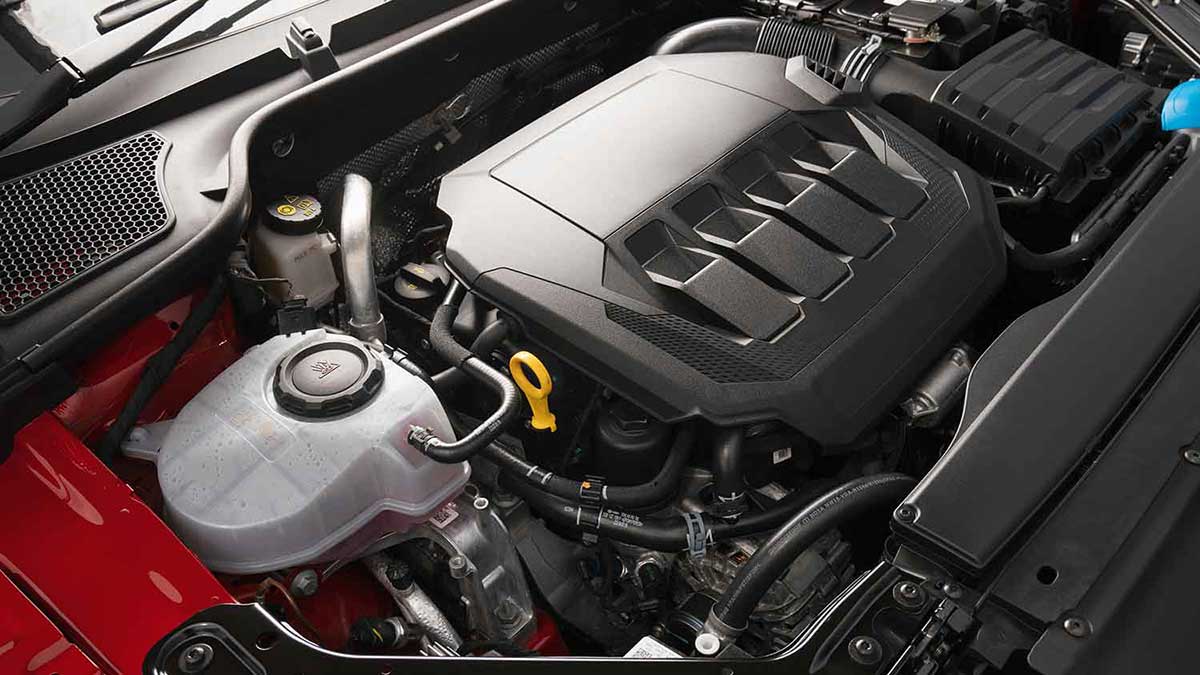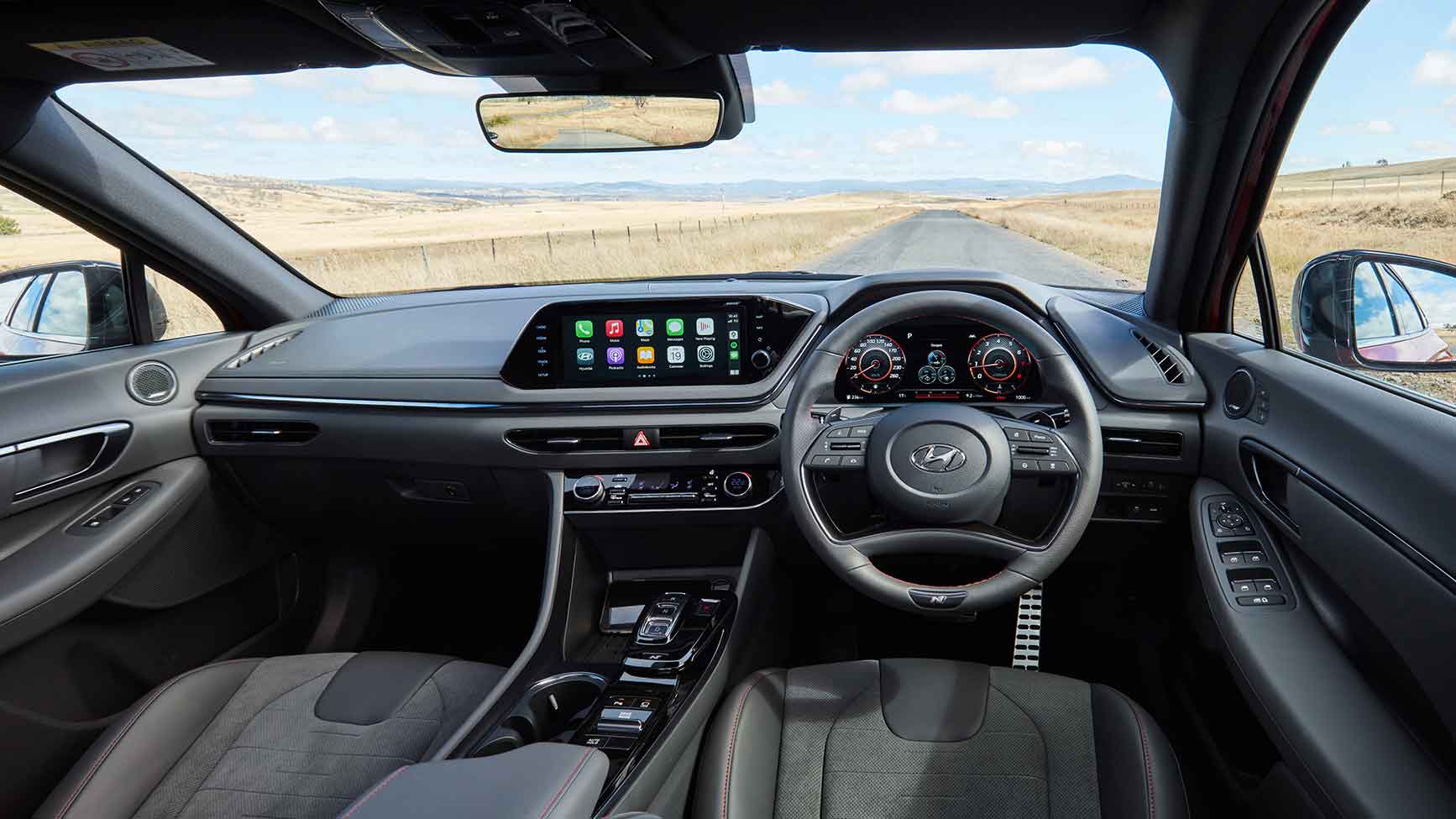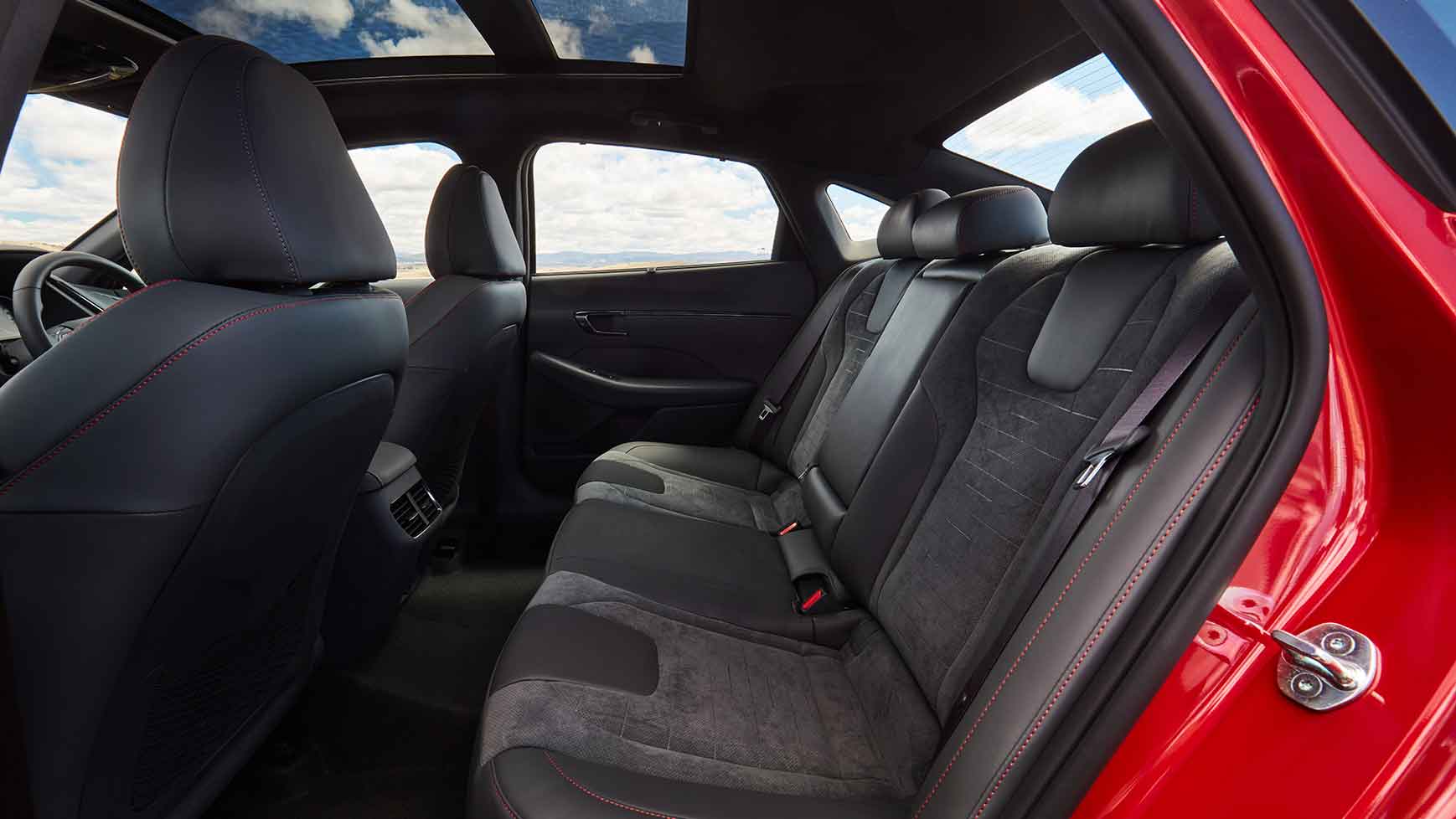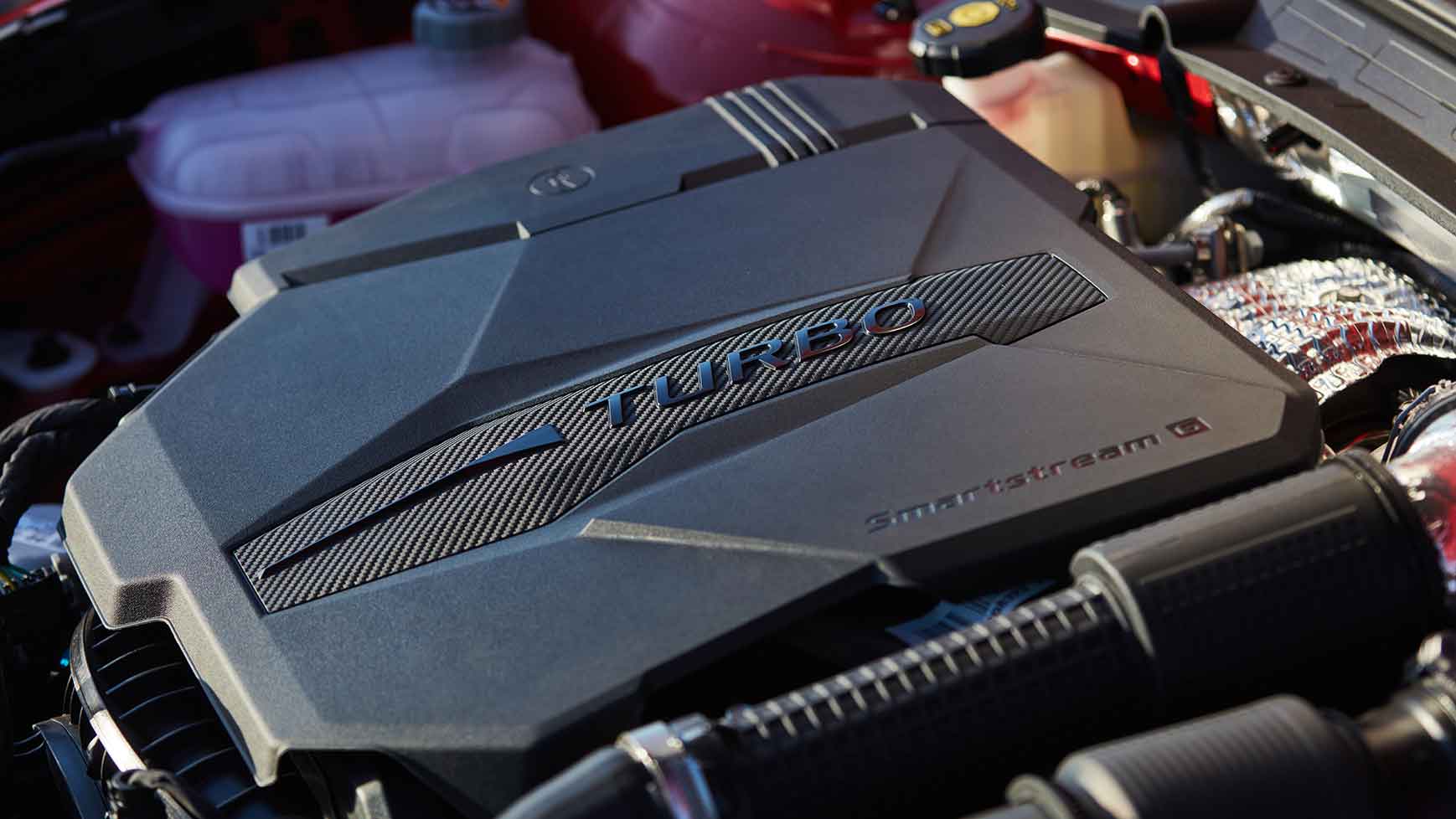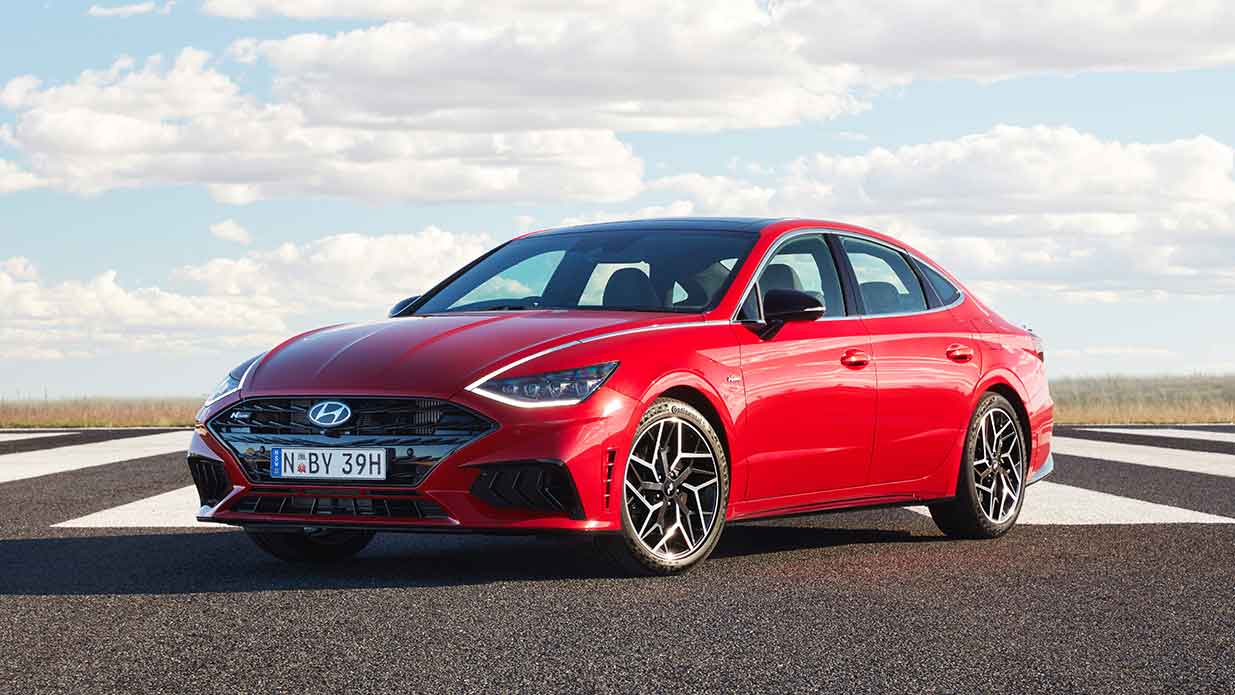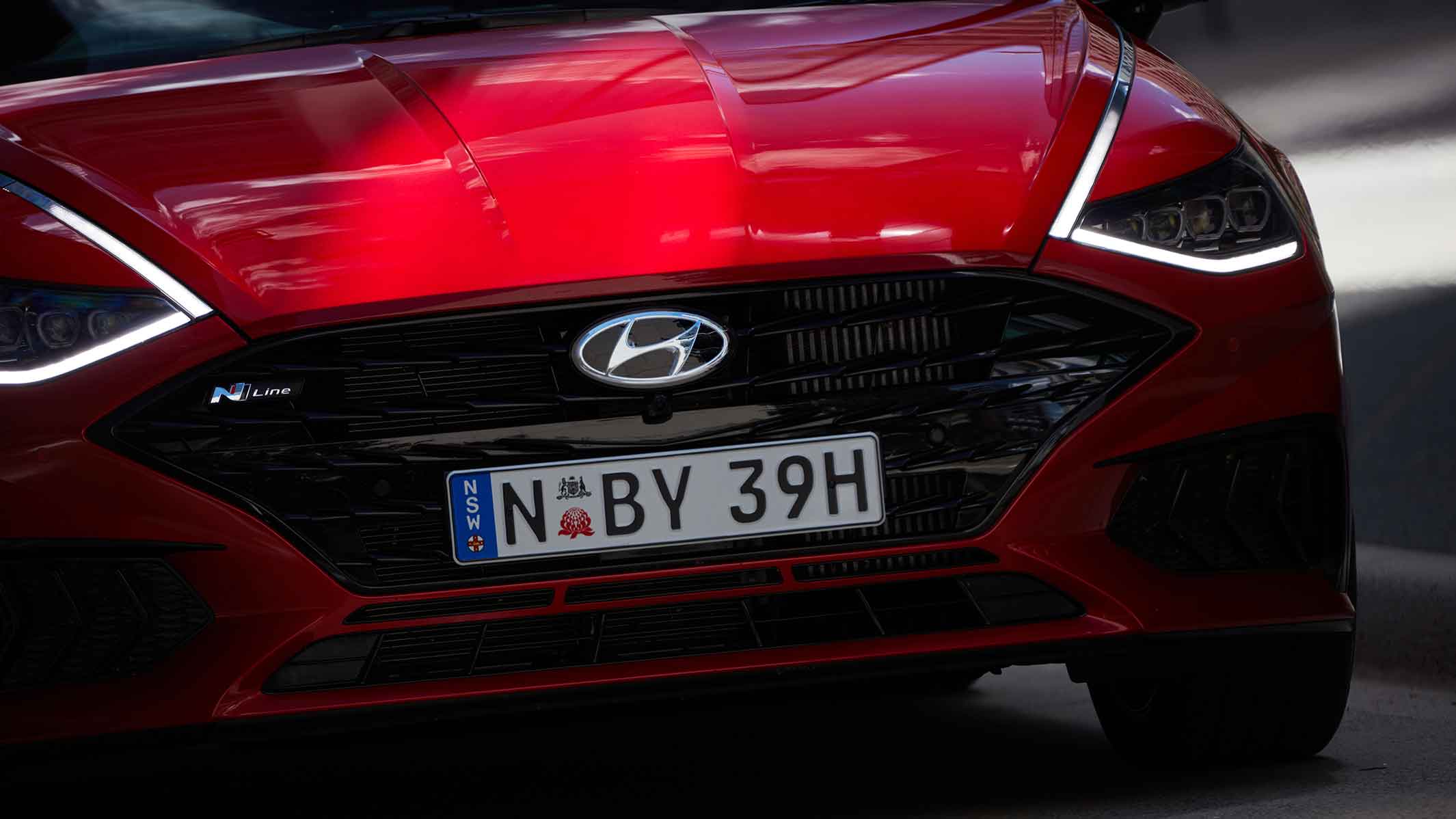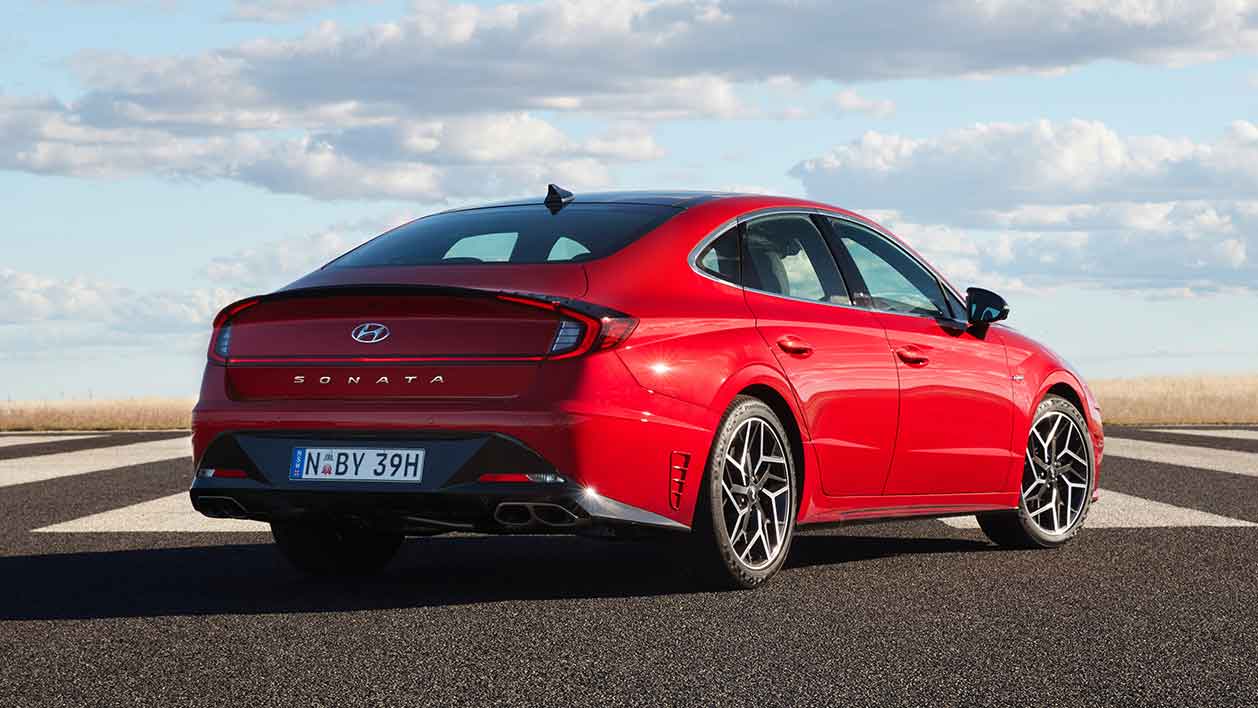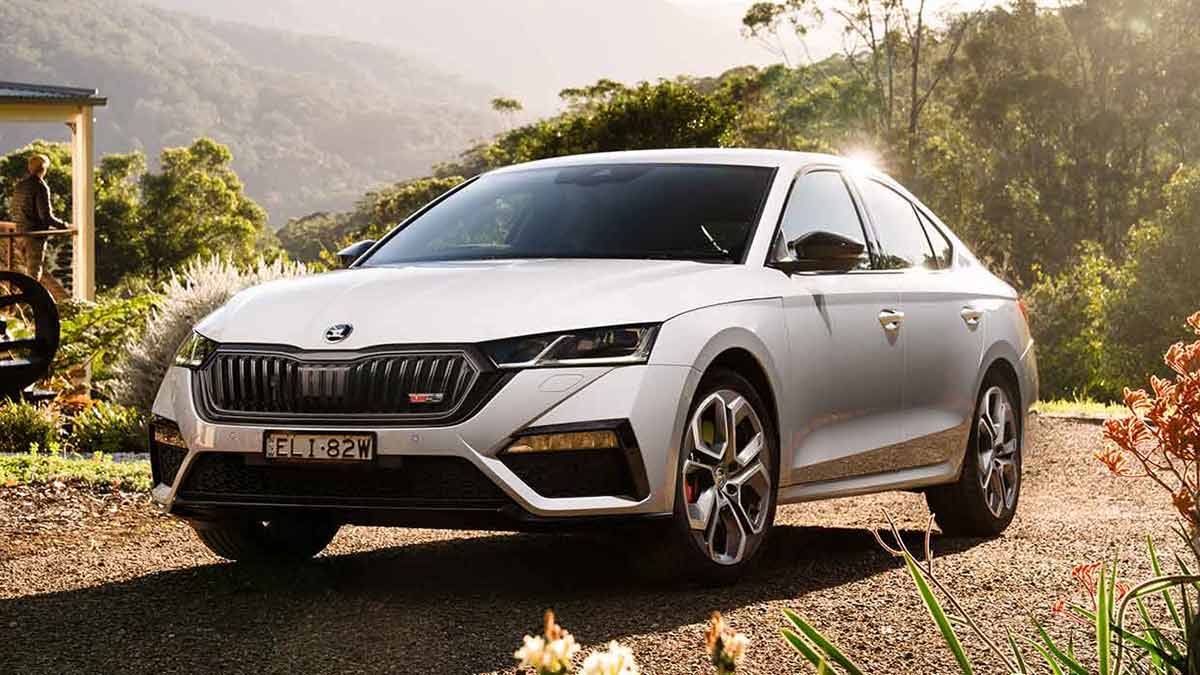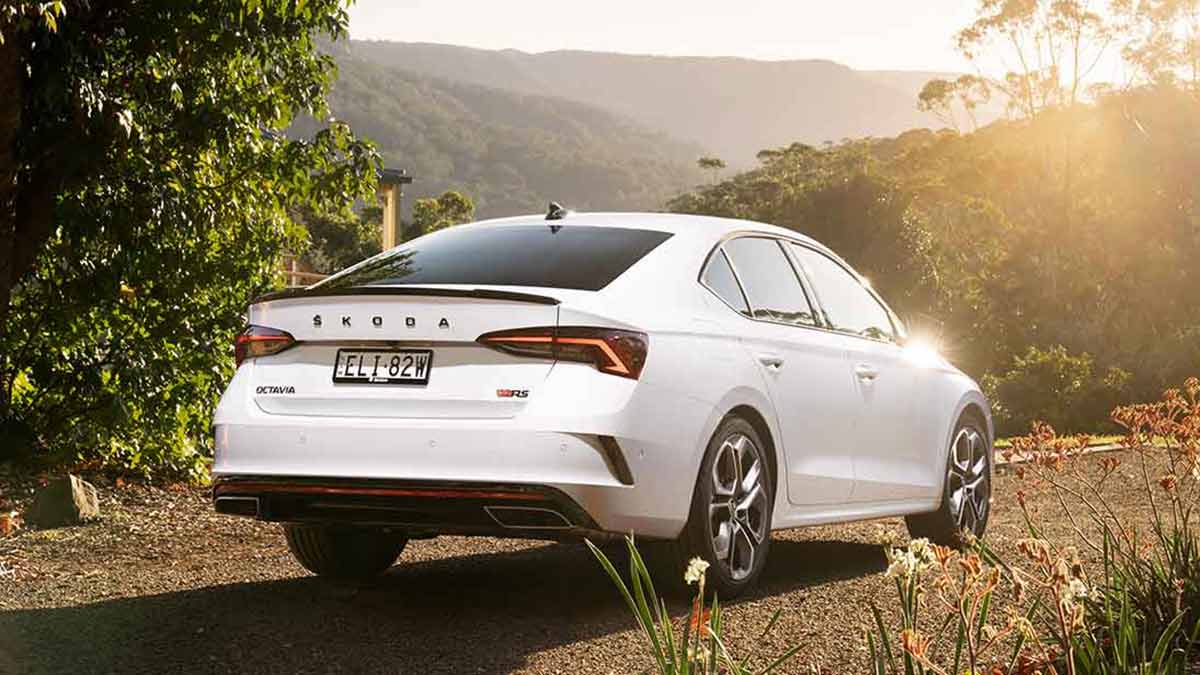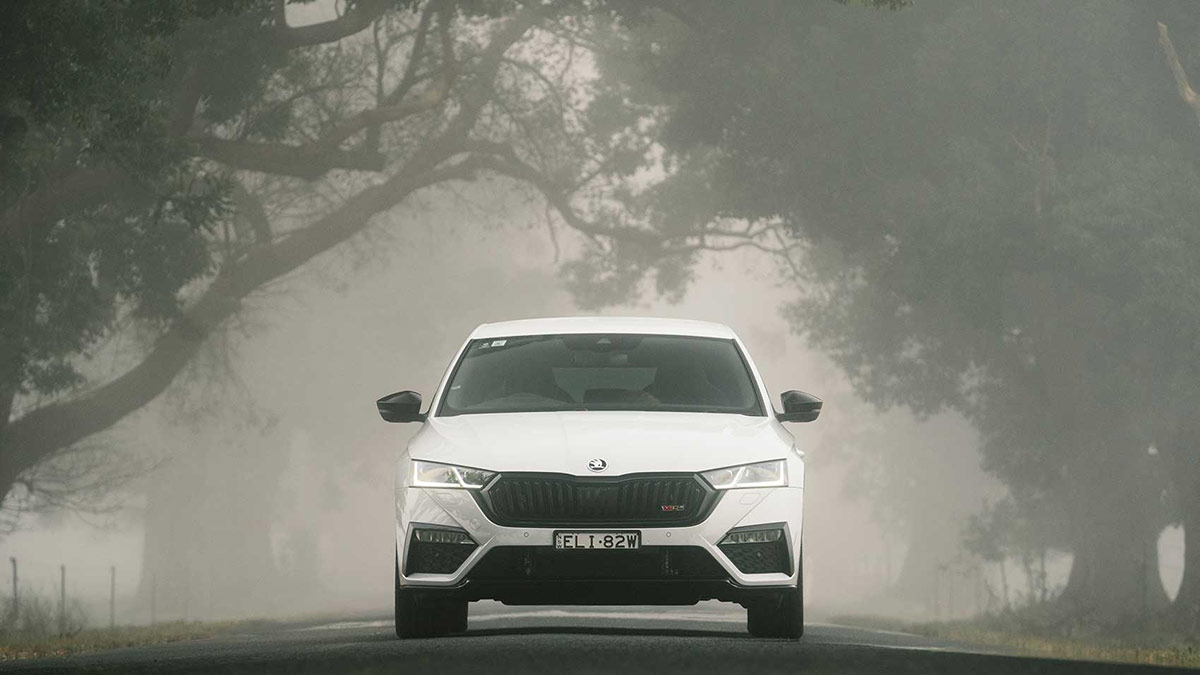The Foton Tunland joins Australia's dual-cab ute market as an affordable mild-hybrid diesel under $50,000, offering strong capability against tough competition.
2021 Skoda Octavia RS and Hyundai Sonata N-Line side-by-side
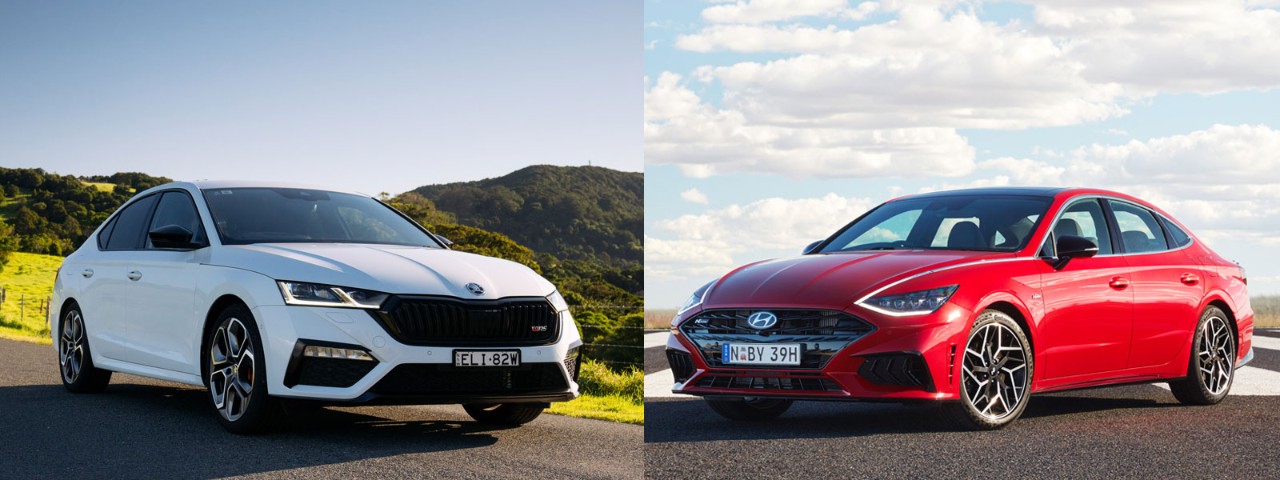
The Hyundai Sonata N-Line and Skoda Octavia RS are both affordable, practical family cars doubling as engaging sports sedans.
So, you’ve got about $50,000 to spend on a car and you want something fun. Well, you’re in luck. Here we have not one but two similarly positioned, but also very different, sports sedans. In one corner we have the Hyundai Sonata N-Line. The words ‘Sonata’ and ‘fun’ are not often used in the same sentence, but the all-new version, exclusively available in Australia in sporty N-Line guise, has changed that. It’s a feature-packed, potent sports sedan with a polarising design and focus on performance.
In the other corner we have the highly regarded Skoda Octavia RS liftback in freshly launched fourth-generation guise. A long-time favourite thanks to its combination of practicality (it’s also available as a wagon) and sparkling performance, the new Octavia has sharper styling, a beefier powertrain and a lot more onboard tech than before.
We drove these two vehicles a few weeks apart, so this is not a back-to-back comparison. Instead we have pulled together the pros and cons of each model to determine which one is the top pick. Can the Korean contender claw back its reputation, or is it Czech mate for the sexy Skoda?
Hyundai Sonata N-Line
Thumbs up: Value for money, spacious, well-appointed cabin, impressive performance.
Thumbs down: Polarising design, location of the park brake.
Skoda Octavia RS liftback
Thumbs up: Dynamic prowess, ride quality, responsive turbo engine, minimalist cabin design.
Thumbs down: Laggy idle stop, fake engine sound, pricey options package.
How much do these models cost?
The Hyundai Sonata N-Line is priced at $50,990 before on-road costs and is the only model grade available. Given the huge drop in sedan sales, Hyundai decided not to offer the more sedate Sonata variants in Australia for the new-generation model.
For this price, Hyundai has thrown in so much standard gear that there’s only one available option – premium paint ($595), which was fitted to our test car. With high-end features like heated and ventilated front seats, heated rear seats, panoramic sunroof, manual rear door sunblinds, 12-way power adjustable driver’s seat and way more, the Hyundai has value on its side.
The RS sits atop the recently launched Octavia range as the performance flagship, priced at $47,790 before on-road costs for the sedan (it’s actually a liftback) and $49,090 for the wagon. Other Octavia variants including the Ambition 110TSI, Style 110TSI and a limited-edition model grade, range in price from $30,990 to $46,090.
The Octavia RS has a generous standard features list and the new model gains a fresh infotainment setup and the latest version of the Volkswagen Group’s digital instrument cluster. Our test car was fitted with metallic paint ($770) and an RS Premium Pack ($6500) that adds things like adaptive chassis control, a premium audio system, park assist, a driver’s seat massage function, mechanical rear window sunblinds, three-zone climate control and more. As a result, the as-tested price climbs to $55,060.
The Hyundai has the edge in terms of value for money given there is nothing missing from the features list, but the Octavia is still well equipped.
What safety features do they have?
The Sonata is yet to be tested by ANCAP, but the sleek sedan has a lengthy list of standard safety equipment. Once again there is nothing missing from the Hyundai’s features list when it comes to safety.
ANCAP awarded the Octavia the maximum 5-star rating. Skoda has included a lot of safety kit as standard, but it lacks a couple of things found in the Sonata, like the anti-dooring warning, safe exit assist.
Hyundai’s lane keeping aid lacks the refinement of the Skoda’s system. Where the Sonata ping pongs between line markings, the Octavia’s smooth setup stays centred in the lane and doesn’t pull on the wheel.
What's the space like inside?
Before we jump inside, let’s look at the exterior design. Hyundai has taken a more radical approach to the exterior of the new Sonata compared to any generation in the nameplate’s more than 30-year history. The sleek, low-slung profile gives it a coupe silhouette, and sporty styling flourishes including the sexy 19-inch rims add to the vibe. But the front-end design with the chrome light strip running from the central lamps up either side of the bonnet is pretty out there. The connected tail-light boot lid treatment is also bold. Overall, it’s polarising.
The Octavia is unmistakeably Skoda in design, but it’s sleeker and has sharper lines than the model it replaces. The RS gains sporty visual flourishes, including a 15mm lower chassis, that help it stand out from the more staid Octavia variants.
At 4900mm long, the Sonata is a sizeable car. This is evident in the incredibly spacious second row. Anyone buying an SUV for space and practicality should seriously consider a sedan or wagon first. The second row is well equipped with arm rests, bottle holders, USB outlets, air vents and comfortable seats.
Up front, the Sonata’s grey suede and leather-appointed sports seats are exceptional. Good thigh and side bolstering ensures maximum support and comfort and it’s easy to find the perfect driving position.
The clean dash design works well and integrates into the door panels. The push-button gear shifter, also found in other Hyundai models like the Kona Electric, takes some adjustment but works well, although we wish the park brake was located in the console rather than on the right side of the steering wheel.
The digital instrument cluster is well executed but we had to select the digital speedo display every time we started the car. Hyundai’s current infotainment setup is top notch, with an uncomplicated menu and cool graphics.
Skoda’s dash design is also minimal and reminiscent of the all-new VW Golf with which it shares a platform. The clean lines, quality materials and RS-specific flourishes like red stitching and faux suede on the dash and doors make for a premium look and feel. The RS fabric and leather seats are super supportive and look like racing seats. Sexy as.
Skoda’s new infotainment set up has a similar menu to the Hyundai, but it takes it a few steps further. It has a slide volume controller under the screen, and you can swipe down from the top of the screen to access favourites like Bluetooth and idle stop. It also has ‘classic’ or ‘smart’ air conditioning controls. The smart controls have simple commands like ‘warm my feet’, ‘cool my hands’ and more. It’s a bit gimmicky but kind of cool too.
The Octavia is smaller than the Sonata so rear legroom is good rather than outstanding. There is, however, loads of headroom, decent bottle storage, a central armrest, rear climate controls, air vents and USB outlets.
The Sonata sedan can take 510 litres of cargo in the boot, while the Octavia liftback can swallow 600L.
How do they drive?
Under the long bonnet of the Hyundai is a 2.5-litre four-cylinder turbocharged petrol engine pumping out 213kW and 422Nm, driving the front wheels via an eight-speed dual-clutch transmission.
Despite some light torque steer accelerating from a standing start, the Sonata is quick off the mark, with linear power and torque delivery and a smooth shifting transmission. Performance is maintained up steep hills, too. Hyundai claims a 0-100km/h time of 6.2 seconds.
The performance-focused chassis is engineered for sporty driving and the Sonata delivers on that front. It hugs corners and eats up winding roads. Pointy steering further enhances driver engagement and the cabin is relatively well insulated despite some road and wind noise creeping in. The ride is on the firm side but it’s never uncomfortable.
Skoda uses a 180kW/370Nm 2.0-litre four-cylinder turbocharged engine, paired with a seven-speed dual clutch and front-wheel drive. It doesn’t have the outright power and torque of the Sonata’s meatier powertrain, but that’s where the deficiencies end. This thing is brilliant.
After a hint of turbo lag, the Octavia RS builds speed flawlessly, and doesn’t let up on steep ascents. It can cover 0-100km/h in 6.7 seconds, according to Skoda.
The RS has grip for days and the road-holding ability of a much pricier sportscar. The well-balanced chassis is flat during dynamic manoeuvres.
The suspension is so well calibrated that it manages to strike that magical balance of dynamic ability and comfort. You might feel large road imperfections, but the ride on b-roads and urban streets is generally smooth.
Sport mode amps up the throttle response and adds more weight to the steering, but the excellent ride quality remains. The amplified engine noise that gets pumped into the cabin can, thankfully, be turned off. Another function we switched off was the engine stop-start system which is too delayed for our liking.
Aside from that, there’s very little to criticise with the Octavia RS.
The verdict
This is a close call. There is very little wrong with either of these cars. If space and value are the priorities, then the Sonata is the obvious choice. The bonus is that it offers genuine sports sedan performance in an eye-catching package. But if it was our money, we can’t go past the Skoda Octavia RS. It is a perfect all-rounder. The sharp lines, modern, minimalist cabin and virtually flawless performance give it the edge here. The first drive note we wrote about the RS during testing was simply, ‘WOW’. Sums it up nicely.
|
Pricing |
List price: $50,090 before on-road costs. Price as tested: $51,585 before on-road costs. Model range: $50,090 before on-road costs. |
List price: $47,790 before on-road costs. Price as tested: $55,060 before on-road costs. Model range: $30,390 to $49,090 before on-road costs. |
|---|---|---|
|
Drivetrain |
2.5-litre, four-cylinder turbocharged petrol engine, eight-speed dual-clutch transmission, front-wheel drive. Power: 213kW@5800rpm. Torque: 422Nm@1650-4000rpm. Wheels: 245/40 R19. |
2.0-litre, four-cylinder turbocharged petrol engine, seven-speed dual-clutch transmission, front-wheel drive. Power: 180kW@6500rpm. Torque: 370Nm@1600-4s00rpm. Wheels: 225/40 R19. |
|
Fuel |
91 RON petrol, 60-litre tank. Consumption: 8.1L/100km (government test), 11.4L/100km (RACV test), Emissions: 188g/km CO2. |
95 RON PULP, 50-litre tank. Consumption: 6.8L/100km (government test), 10.2L/100km (RACV test). Emissions: 155g/km CO2. |
|
Standard safety |
Autonomous emergency braking with pedestrian and cyclist detection, driver attention warning, lane keep assist, rear cross-traffic alert, adaptive cruise control with stop and go, safe exit assist, surround view monitor, blind spot monitor. |
5-star ANCAP rating, 10 airbags, autonomous emergency braking with pedestrian and cyclist detection, adaptive cruise control, blind spot monitor, emergency assist, driver attention warning, tyre pressure monitor, multi-collision brake, lane keep assist. |
|
Standard features |
Suede and Nappa leather-appointed seats, 12-way power adjustable driver’s seat, panoramic sunroof, head-up display, 12.3-inch TFT digital cluster, dual-zone climate control, heated seats, ventilated front seats, 10.25-inch touchscreen with digital radio sat-nav and Apple CarPlay/Android Auto. |
Power boot opening, digital instrument cluster, wireless device charging, dual-zone climate control, keyless entry and start, 10-inch touchscreen with digital radio, sat-nav Android Auto and wireless Apple CarPlay, RS sports seats, privacy glass. |
|
Warranty |
Five-year/unlimited kilometre warranty. Capped-price servicing plan for the lifetime of the car. Service intervals every 12 months/10,000km. |
Five-year/unlimited kilometre warranty. Three or five-year capped-price servicing plan. Service intervals every 12 months/15,000km. |
The information provided is general advice only. Before making any decisions please consider your own circumstances and the Product Disclosure Statement and Target Market Determinations. For copies, visit racv.com.au. As distributor, RACV Insurance Services Pty Ltd AFS Licence No. 230039 receives commission for each policy sold or renewed. Product(s) issued by Insurance Manufacturers of Australia ABN 93 004 208 084 AFS Licence No. 227678.
